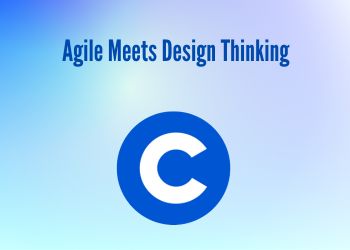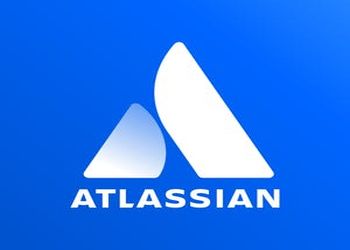Software development methodologies are always used to provide guidance regarding how you can structure, plan, and control the way a software system is developed. And for this purpose, their many software development approaches that you as a software developer would want to use. So today we are going to talk about two of such approaches which are Rational Unified Process RUP Vs Agile. Are you interested to learn how Agile and DevOps are interrelated? follow here. Take your skills to next level with Agile Training Courses from top universities and providers.
- Brief history of both methodologies i.e. RUP and Agile
- Case Studies
-
- Examples of successful implementation of RUP
- Examples of successful implementation of Agile
-
- Challenges with RUP and Agile
-
- Common challenges with RUP implementation
- Common challenges with Agile implementation
-
- Comparison of RUP Vs Agile
- Recommendations for choosing the right methodology
Brief History of Both Methodologies
Rational Software Corporation was the first company that introduced Rational Unified Process (RUP) in 1998. The design basis of RUP was to develop a customizable and flexible software development process framework applied to multiple projects. RUP lays great emphasis on cycles or iterations of work integrated with incremental development. It has four phases: Inception, Elaboration, Construction, and Transition.
On the contrary, in 2001, Agile Manifesto introduced the Agile Methodology. It lays great emphasis on uninterrupted delivery, stakeholder collaboration, and continuous improvement. Agile development aims to delegate small, self-organizing teams that collaborate in small iterations, usually up to 4 weeks, and follow set standards and practices.
RELATED:
 Agile Innovation and Problem Solving Skills
Agile Innovation and Problem Solving Skills
- University of Maryland via edX
- 25,327+ already enrolled!
- 12 Hour of effort required
- ★★★★★ (18 Rating)
 Agile Meets Design Thinking
Agile Meets Design Thinking
- University of Virginia via Coursera
- 160,475+ already enrolled!
- 09 Hour of effort required
- ★★★★★ (3,335 Rating)
 Agile Software Development
Agile Software Development
- University of Minnesota via Coursera
- 150,208+ already enrolled!
- 11 Hours of effort required
- ★★★★★ (6,910 Rating)
Case Studies
A. Examples of successful implementation of RUP
One of the many prominent examples of RUP implementation being a great success is the development of the Mars Reconnaissance Orbiter (MRO) by NASA’s Jet Propulsion Laboratory. RUP was applied to the project to aid the team in handling requirements, risks, and change management. The project was completed within the time limits and under the sanctioned budget. Also, it successfully mapped the surface of Mars.
B. Examples of successful implementation of Agile
One of the popular entertainment companies Spotify which offers music streaming services, implemented Agile methodology to develop and launch their product. The use of Agile methodology facilitated Spotify to perform numerous iterations quickly and test new features, respond promptly to audience feedback, and release updates accordingly and frequently.
Challenges with RUP and Agile
A. Common challenges with RUP implementation
The complex nature of RUP implementation is one of the common challenges. A substantial amount of time and resources are required by RUP to customize and adapt it to determined projects. Furthermore, it might not fit the criteria of suitability for small businesses.
B. Common challenges with Agile implementation
One of the common challenges with Agile implementation is the assessment of progress on the basis of key performance indicators and the estimation of schedule with accuracy. Since Agile focuses on iterative and incremental development, it could be challenging to estimate the exact investment of time and money.
Comparison of RUP Vs Agile:
RUP |
Agile |
| Rational Unified Process is a software development approach that is mainly used by software developers in a web application development. | Agile, on the other hand, is known to be a software development approach that aims to deal with the unpredictability of different software development projects. |
| RUP comes with several benefits and tools which can be used throughout the software development process. These include templates like HTML and web templates. With that it also provides different examples from other projects that the software developer can adopt. | Whereas, agile approach also has its perks as it helps the team to be ready for dynamic and unpredictable project development scenarios. Another advantage here is that it helps the teams to assess how well the project is going throughout its lifecycle. |
| RUP comprises of four phases which are known to be inception, elaboration, construction, and transition. Check out the PSM Certification Dumps & Practice Test here. | Contrary, agile approach doesn’t have any phases. Instead, it lets the whole team pass through a series of iterations or short cycles which are made up of different steps. These steps are analyzing, designing, developing, and testing. |
| RUP is quite comprehensive and is designed to be modified to suit the project being developed. | Agile whereas tends to be used for only small to medium sized projects that involve teams up to 10 closely knit developers. You might also be interested in When Agile is not Suitable. |
| Being a comprehensive approach adds another layer of complexity to the development effort. Why? Because it adds another layer of complexity to the development effort as now the process is to be modified first and then implemented. | In agile process, the goal is to have a stable software that can be shipped at the end of each iteration. At the beginning of each iteration, each stakeholder meets and reorganize the requirements and their priorities. It is so that the product delivered is according to the demand of the stakeholder. |
| For modification, the team must have access to UP experts so that they ensure the process is being defined and used properly. | For the agile approach to lead to successful completion of the project, it demands that the team size must not be bigger as they don’t scale to large teams. |
| In the RUP approach, it is best to have all the roles defined in the beginning so that everyone knows what they should and shouldn’t be doing. | But in the agile approach, the whole team is accountable for anything that happens and that is why they recognize no roles within the development team. You can also find CSM practice tests useful in order to validate your scrum skills. |
Some other Courses for Scrum Certifications
 Scrum Master Prep + Scrum Master + Agile Scrum Training
Scrum Master Prep + Scrum Master + Agile Scrum Training
- Paul Ashun via Udemy
- 184,348+ already enrolled!
- ★★★★☆ (23,026 Ratings)
 Agile with Atlassian Jira
Agile with Atlassian Jira
- Atlassian via Coursera
- Learn for FREE, Up-gradable
- 75,943+ already enrolled!
- ★★★★★ (3,344 Ratings)
 Agile Meets Design Thinking
Agile Meets Design Thinking
- University of Virginia via Coursera
- Learn for FREE, Up-gradable
- 120,561+ already enrolled!
- ★★★★★ (2,613 ratings)
Recommendations for Choosing the Right Methodology
Several factors might come into consideration while choosing the optimal methodology which includes project size, complexity, and requirements. For instance, RUP is a perfect fit for large-scale and more complex projects having clarity in terms of its requirements. Conversely, Agile would be well-suited for simple projects with changing requirements. It deems necessary to evaluate the project requirements, the team’s competency, and stakeholders’ expectations prior to choosing a methodology.
Evidently, Agile and RUP have their pros and cons. The decision of choosing the appropriate methodology is made based on the above-discussed factors. One critical area to ponder is to understand the standards, practices, and principles that each methodology follows and choose the one which seems to be coherent with the project’s outcomes and goals.



